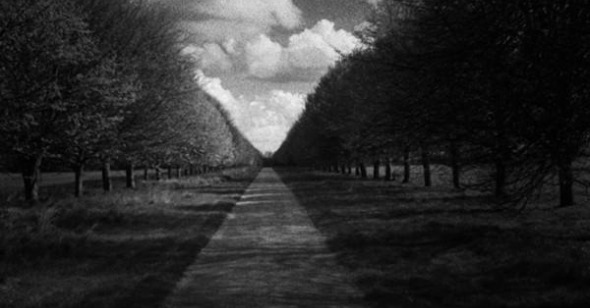Going Back to Saturn
By Benjamin Mercer
Patience (After Sebald)
Dir. Grant Gee, U.S., Cinema Guild
The title Patience (After Sebald) will remind readers of the late W. G. Sebald—whose unclassifiable 1995 book The Rings of Saturn (translated into English in 1998 by Michael Hulse) is the ostensible subject of Grant Gee’s new documentary—of the author’s book-length poem After Nature. And true to this association, the movie treats Sebald with great solemnity, as a sort of Stonehenge-like ruin in and of himself, posthumously trying to make him something like a novelty subsection of the great themes of his own antiquarian German poetry and prose—Civilization, History, Memory.
As a number of largely off-screen talking heads—Andrew Motion, Iain Sinclair, and Rick Moody, among them—attest, to many of his fans Sebald has become not only a state of mind but also a sort of stand-in for uncanny coincidence itself. After narrating a series of chance occurrences relating to the author’s work, the artist Lise Patt (also editor of the book Searching for Sebald) speaks of how she created a sort of Sebald “Ouija board” by cutting up the transcription of an interview he recorded for KCRW on December 6, 2001, eight days before he died in a car accident. The photographer Jeremy Millar relates another ghost story: he set off a firework on the side of the road where Sebald had veered off, and took a series of photographs of the smoke dissipating, the final image of which somewhat resembles Sebald himself, with his characteristic bushy white moustache.
This one’s mostly for the fans, and some of it might be a little bit hard for even them to swallow. The text of The Rings of Saturn, and the rambling walk around Suffolk taken by its narrator (the film features a whole lot of heavily pinpointed Google Maps), create a backbone for such eerie recountings, as well as more general musings on the elusive qualities of Sebald’s work. Gee, who has also made documentaries about Radiohead and Joy Division, retraces the walk, capturing locations mentioned in the book with a Bolex camera. He occasionally inserts a postage-stamp-like walker’s-eye view of a pair of feet in motion over these black-and-white images. He also includes grainy images of someone thumbing through an edition of The Rings of Saturn, as if staking out a materiality-of-the-text position that Sebald would have presumably espoused had he lived into the e-book era. (One person expresses surprise that he didn’t use e-mail, despite the hyperlink circularity of his prose.)
Perhaps in tribute to Sebald—as most gestures here are—Gee provides the pictures but mostly lets others do the talking (Sebald’s narrators tend to recount others’ stories instead of their own, while displaying certain tangential odds and ends from their photo drawers). There’s plenty of creative fandom—Moody shows off a complex Rings of Saturn idea-web diagram, and the Sebald-related projects of several visual artists are discussed. A lot of time is also devoted to descriptions of brief brushes with the author, often familiarly called “Max.” He’s dubbed “profoundly likable,” “unobtrusive,” with “an otherness about him”—“the most weary man I had ever seen in my life,” when glimpsed on an elevator during a press-tour-in-miniature for his final book, Austerlitz. By far the most interesting personal reminiscences come from his British publisher, near the very beginning of the film.
Patience builds to no particular conclusions, though its wide-ranging discussions are often diverting enough for those with a prior interest in Sebald, perhaps most of all for the succession of evocative phrases used by the writers and artists Gee interviewed: “imaginative pressure,” “vanishing of stabilities,” “the dream life of debris” (a phrase from Nabokov’s Transparent Things dusted off by one author here). The words consistently make much more of an impression than the images. A few of the high-profile fans who had also followed the route laid out in The Rings of Saturn note the impossibility of experiencing anything of the pilgrimage that Sebald himself took; Gee’s ashen shots from the field confirm this, sometimes tricked out with little atmospheric embellishments (a TV moodily flickering static, for instance) that fail to tap into the legacy of postwar melancholy they seem meant to. One talking head here describes Sebald as a “biographer who walks his subjects back into life.” Patience is a reasonably intelligent but weirdly small-minded film about certain members of the cult of Sebald and their fated attempts to walk him back to life, disguised as a meditation on his work and notions of “placeness” in it.
